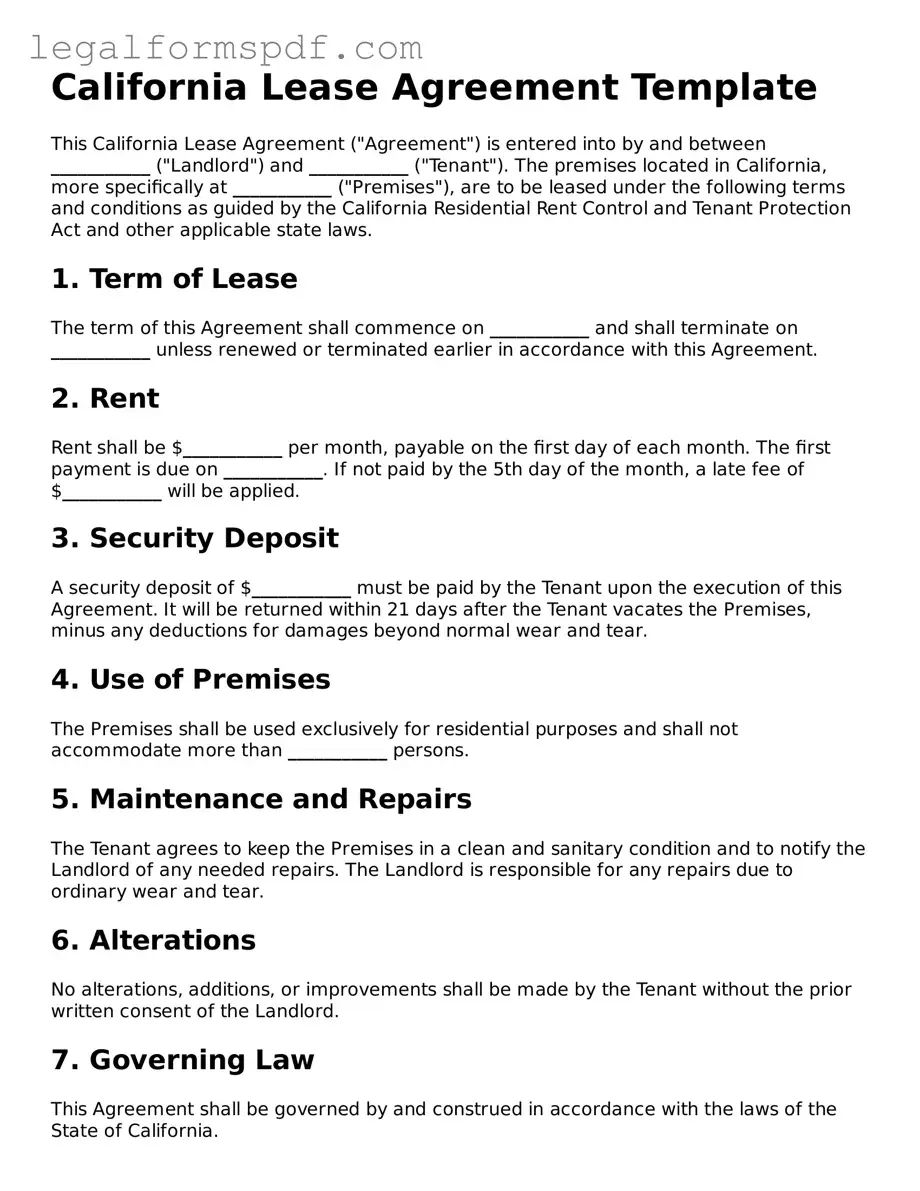One document similar to the California Lease Agreement form is the Residential Rental Agreement. This document outlines the terms and conditions under which a tenant agrees to rent a living space from a landlord. Like the Lease Agreement, it details rent amount, security deposit, lease duration, and rules about pets, maintenance, and utilities, ensuring both parties share clear expectations about the rental arrangement.
The Sublease Agreement is another document bearing resemblance to the California Lease Agreement form. It is used when an original tenant wishes to rent out their leased premises to a third party. The Sublease Agreement encompasses many of the same terms found in the original lease, such as payment terms, property rules, and duration, but it additionally requires the consent of the original landlord, making it a tripartite agreement among the original tenant, subtenant, and landlord.
The Commercial Lease Agreement shares similarities with its residential counterpart but applies to commercial properties. It lays out the terms under which a business entity rents commercial space from a landlord. Important details such as rent, lease length, property use restrictions, and modification allowances are specified, aligning with the detailed stipulations found in residential leases to ensure both landlord and tenant understand their rights and responsibilities.
A Room Rental Agreement, often used when an individual rents out a room in a house or apartment, has parallels with the California Lease Agreement form. This agreement details specific arrangements like shared living spaces, utility payments, and house rules in addition to standard lease terms. It's tailored to situations where individuals must coexist in shared living spaces, emphasizing the importance of clarity and understanding in close-quarters living.
The Lease Renewal Agreement, which extends the term of an existing lease agreement, also mirrors the California Lease Agreement form in its purpose to continue a rental relationship under agreed-upon terms. It typically reaffirms or slightly modifies the original lease terms, such as rent amount or lease duration, facilitating a seamless continuation of tenancy without the need to negotiate a new lease from scratch.
The Property Management Agreement is a document between a property owner and a manager or management company. While not a lease, it closely relates to the maintenance and operation aspects of the California Lease Agreement form. This contract outlines responsibilities like collecting rent, handling repairs, and dealing with tenants, ensuring the property is well-maintained and profitable, aligning with the landlord's obligations in a lease.
An Eviction Notice, although not an agreement, is a legal document that follows the framework of lease agreements when tenant-landlord disputes arise. It formally notifies a tenant of a lease violation or the end of the lease period, requiring them to vacate the property. The notice specifics, such as reasons for eviction and notice period, stem from terms agreed upon in lease agreements, highlighting the importance of contractual adherence.
Lastly, the Lease Termination Agreement, which is used to end a lease before its original expiration date by mutual consent, echoes elements of the California Lease Agreement form. It outlines the conditions under which the lease is concluded, possibly including terms about notice periods, final rent payments, and security deposit returns. By agreeing to early termination terms, both parties can amicably dissolve their lease arrangement, which underscores the lease's role as a binding contract that can also be flexibly ended when circumstances require.
